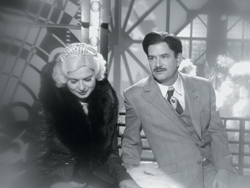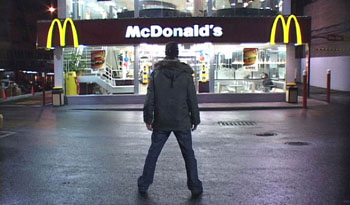
This enjoyable but overlong documentary follows the band Metallica in its attempts to regroup after a series of setbacks and squabbles. It's an insider's view of a band that feels as much like a family as a business, but it's so ill-paced that the rousing conclusion seems to come out of nowhere, a minor hurdle cleared by fidgety, easily irked millionaires on the way to their next album. Veteran filmmakers Joe Berlinger and Bruce Sinofsky who made Brother's Keeper and Paradise Lost could learn a thing or two from rookie Sam Jones who made his feature debut a couple of years ago with a similar documentary about the band Wilco. The Wilco documentary tracks the making of an album amid interpersonal friction, and with its crystal clear point of view it puts this movie to shame. As a fan of Wilco and not Metallica, I may be biased, but I truly am fascinated by high school friends who find themselves at the center of a multi-million-dollar organization — what band member James Hetfield calls a "monster" — and whose inability to get along threatens the stability of the superstructure. It's something that a smaller group like Wilco may never experience, so I went into the theater ready to learn all about how these guys resolve their personal issues under such pressure.
A good documentary is buried here, I'm sure, and there are good scenes scattered throughout, such as when the band, uneasy with the idea of recording a promo for a chain of radio stations, hams up the recording session. Or a scene in which the abrasive but surprisingly vulnerable drummer Lars Ulrich admits to feeling terrible after he watches a former Metallica bassist perform a successful gig with his new band. Or a scene in which lead singer Hetfield warms up for a gig by using a cassette tape that he got years before at a voice lesson. Such moments go a long way toward humanizing figures who also, when the going gets tough, can relax on the ranch, sell some valuable pieces of artwork for a pick-me-up, or spend a few months in rehab, but maybe more than anything else the fly-on-the-wall footage demonstrates the remarkable level of trust the filmmakers earned from the people who have the most to lose, and the most to gain, from the project.
But the documentary entertains far too many tangents and takes a wishy-washy attitude toward the touchy-feely therapist who works with the band. The most interesting discussions in the movie are about how to get rid of this guy who's milking the group for $40,000 a month. It's a problem echoed in the plight of the filmmakers. How should they wrap up this movie? Has the goal been accomplished? Can they put a Behind The Music, triumph-over-adversity bow on the band's recent problems and call it a day? Hanging over the entire project is an unstated recognition by everyone involved that such a story is good for the movie, good for the album, and good for the rock monster, but this produces a less than forthright documentary. Berlinger and Sinofsky have a way of making movies in which they themselves are unwittingly a part of the beast. For Paradise Lost they investigated a grisly child murder and tried to make the case that certain convicted teens were innocent and certain unconvicted parents were guilty, but the facts of the case were far less interesting than how the camera's presence affected those involved; when they stepped in front of the camera, the characters in the sordid tale employed everything they'd ever learned from watching television. Similarly, the musicians in Metallica, despite their frankness on the big screen, are surely aware of the power that these kinds of documentaries possess and have seen enough of them to know how they're supposed to end.

